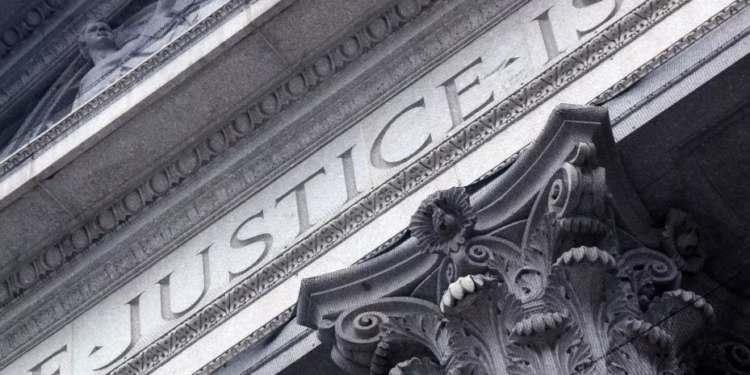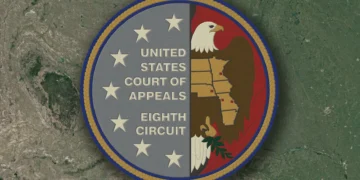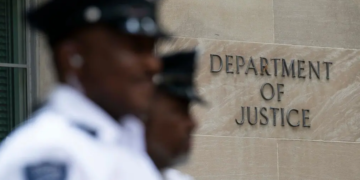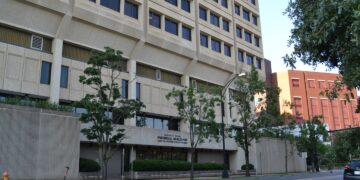Oct 1, 2024 Story by: Editor
A historical thread links the legacy of slavery to the current political and economic landscape of the Southern United States. The Economic Policy Institute’s Rooted in Racism series reveals that the Southern economic model is defined by low wages, regressive taxation, minimal business regulations, scant labor protections, a fragile safety net, and staunch resistance to unions. Similar to the antebellum South, which thrived on the exploitation of enslaved labor, the modern Southern economy also depends on a vulnerable and disenfranchised workforce (Childers 2024b). This analysis highlights how political and economic repression—rooted in racism—has been pivotal in shaping and sustaining the Southern economic framework.
From the arrival of the first enslaved Africans in the Americas, authoritarian and white supremacist entities have employed disenfranchisement, deceit, intimidation, and violence to extract wealth from Black and brown communities (Desmond 2019; Torres-Spelliscy 2019). Although the abolition of slavery after the Civil War momentarily disrupted this dynamic, new forms of repression soon emerged. In reaction to Black emancipation and voting rights, Southern leaders instituted Black Codes and subsequently Jim Crow laws to solidify white supremacy and uphold an exploitative economy. The Civil Rights Movement of the 1960s marked significant strides toward racial equity and Black political empowerment; however, these advancements faced renewed opposition. The dismantling of critical safeguards under the Voting Rights Act of 1965—especially following the 2013 Shelby v. Holder decision—has sparked a resurgence of voter suppression tactics reminiscent of the post-Reconstruction efforts to disenfranchise Black Americans. Today, these tactics continue to threaten racial equality and sustain the Southern economic development model.
Emancipation and Reconstruction: Defining Black Citizenship and Civic Engagement
The Declaration of Independence asserts that all men are created equal and entitled to life, liberty, and the pursuit of happiness. Nevertheless, these principles coexisted with the brutal reality of chattel slavery. As illustrated in Figure A, nearly one-fifth to one-eighth of the U.S. population—enslaved Africans and Black Americans—were systematically denied these rights (Gibson and Jung 2002). For almost a century after the nation’s founding, the U.S.—particularly the South—prospered through this exploitation, amassing vast wealth via the coerced labor of enslaved individuals.
Throughout American history, Black Americans have fought fiercely to attain self-determination and political representation. Before emancipation, only five Northern states—Maine, Massachusetts, New Hampshire, Rhode Island, and Vermont—offered some level of Black suffrage, and even then, Black voters faced rampant discrimination (Litwack 1965). In 1857, the Supreme Court further eroded Black citizenship with its infamous Dred Scott v. Sandford ruling, which determined that Black individuals, whether enslaved or free, were neither citizens nor entitled to protections under the U.S. Constitution. This decision heightened tensions surrounding slavery, ultimately contributing to the onset of the Civil War.
While the Confederacy’s defeat in 1865 symbolized the formal end of slavery, it did not equate to genuine freedom or self-determination for Black Americans. In the aftermath of Robert E. Lee’s surrender to Union General Ulysses S. Grant on April 9, 1865, disgruntled white Southerners—fearful of losing political and economic power—swiftly organized to thwart Black emancipation and voting rights.
Beginning with Mississippi and South Carolina in 1865, Southern state governments became instruments for reinstating the exploitative plantation labor system post-Civil War. These states enacted laws known as Black Codes, which criminalized virtually all aspects of Black life. These laws compelled freed men, women, and children to enter exploitative labor contracts, often on the very plantations where they had previously been enslaved (EJI n.d.d). Furthermore, Black Codes criminalized unemployment through vagrancy laws, coercing freed individuals into these labor contracts. Those caught in this criminalization often found themselves funneled into prison labor systems that leased convicted workers to private businesses for profit. By 1869, most former Confederate states—including Alabama, Arkansas, Georgia, Louisiana, South Carolina, and Texas—had implemented such prison labor schemes (Kelley 2017; Cardon 2017; Dirkson 2024; EJI n.d.c).
Black Codes also restricted the civil rights of Black Americans by forbidding them from testifying against white individuals in court, serving on juries, joining militias, or exercising their right to vote. W.E.B. Du Bois (1935), a prominent sociologist and founder of the NAACP, noted that these laws represented “an indisputable attempt on the part of Southern states to make Negros slaves in everything but name.” These codes were direct efforts to maintain white supremacy through political and economic control in the post-emancipation South.
The conditions faced by Black men and women under Black Codes were so severe that they were described as a “slow-motion genocide” (Gordon-Reed 2011; PBS n.d.a; USCS 1865). Reports on the plight in the South compelled Congress to enact the Civil Rights Act of 1866, overriding President Andrew Johnson’s veto. This was the first federal law to define U.S. citizenship and affirm that all citizens, regardless of race, were entitled to equal protection under the law. This legislation also set the stage for the Reconstruction Acts of 1867, which placed Southern states under military control to enforce these new rights and combat the resistance from former Confederate states.
Ratified in 1868, the 14th Amendment further secured equal protection for all citizens, redefining citizenship to encompass Black Americans. The 15th Amendment, adopted in 1870, prohibited the denial of the right to vote based on race, color, or previous condition of servitude. These reforms enfranchised millions of formerly enslaved Black men.
During Reconstruction, Black civic engagement flourished. As depicted in Figure C, Black men registered to vote in unprecedented numbers, achieving outright majorities of registered voters in five former Confederate states. These new, multiracial electorates drafted new state constitutions, eliminating many barriers to voting established by the Black Codes. During this era, around 703,400 of the approximately four million freed men and women registered to vote (Franklin 1994; Census 1870). Additionally, 660,000 white Southerners who had pledged the Ironclad Oath—swearing loyalty to the Union—registered to vote. By 1870, Mississippi elected Hiram Revels as the first Black U.S. Senator, marking a significant milestone (MCRM 2024). Throughout this period, approximately 1,500 to 2,000 Black individuals held public office across the South (Foner 1993).
Jim Crow: The Rise of Modern Voter Suppression and the Southern Model
The swift advancements made during Reconstruction faced violent backlash as Jim Crow laws initiated a new era of racialized political suppression and solidification of the Southern economic model. White supremacist groups, eager to reclaim their power, resorted to violence, intimidation, and legal manipulation to reverse the progress made by Black Americans. A report by the Equal Justice Initiative estimates that approximately 2,000 lynchings occurred between 1865 and 1876, often without consequence (EJI 2020). Historical data indicates that Black individuals residing in Southern counties with higher past lynching rates are less likely to register to vote today (Williams 2020).
In 1876, a compromise between the Republican and Democratic parties led to the election of Rutherford B. Hayes in exchange for the withdrawal of Union troops from the South, marking what many perceive as the end of Reconstruction (Waxman 2022). Following this concession, white supremacist violence surged, and many Southern governments were reclaimed by Confederate loyalists (EJI n.d.a).
In this climate of renewed white terrorism, empowered Southern legislators enacted numerous laws to institutionalize racial segregation and disenfranchise Black voters. This era, known as Jim Crow, witnessed the emergence of many modern voter suppression tactics. Although the 15th Amendment forbade laws that denied voting rights based on race, color, or previous condition of servitude, white supremacist legislators circumvented these protections by creating “race-neutral” laws—such as poll taxes, literacy tests, and character tests—along with disenfranchisement resulting from criminal convictions. To further protect poor whites from these barriers, legislators introduced grandfather clauses exempting whites from these laws if their grandfathers had been eligible to vote before 1867.
In 1890, Mississippi convened a constitutional convention explicitly aimed at disenfranchising Black voters. The convention’s President, Solomon Saladin Calhoon, stated, “Let us tell the truth if it bursts the bottom of the Universe … We came here to exclude the negro. Nothing short of this will answer” (Shafer 2021). By the end of the convention, legislators imposed a $2 poll tax, literacy tests, and disenfranchisement for nine offenses believed to disproportionately convict Black individuals (MDAH 2024). By 1892, Black voter registration in Mississippi plummeted from 66.9% in 1867 to a mere 5.7% (MCRM 2024; Hannah et al. 1965).
Similar patterns unfolded across the South:
- In 1898, Louisiana enacted a constitution with such extensive restrictions that around 25% of the white male population would have been disqualified without the grandfather clause. Consequently, the number of registered Black voters in Louisiana fell from 130,000 to just 1,718 by 1904.
- By 1883, only 3,700 Black Alabamans remained registered to vote, a decline from a peak of 140,000 during Reconstruction.
- A 1914 report noted that of the 10,300 Black voters in Arkansas, only 142 were registered (Foner 1993; EJI 2020).
These measures effectively stripped Black men and women of their voting rights and enabled white elites to regain power and influence over the political landscape of the South. Jim Crow laws instilled fear and normalized violence, helping to solidify racial hierarchies that would endure for generations.
Modern-Day Voter Suppression: Resurgence of the Southern Model
The passage of the Voting Rights Act of 1965 represented a significant triumph for the Civil Rights Movement, effectively dismantling the formal barriers to Black voter registration and participation. In the wake of this legislation, the number of registered Black voters surged, leading to historic electoral gains, including the election of Black officials at all levels of government. Yet, as the 21st century unfolded, a new wave of voter suppression emerged, echoing the tactics of the Jim Crow era.
The Supreme Court’s decision in Shelby County v. Holder (2013) significantly weakened the Voting Rights Act by striking down key provisions that had required states with a history of racial discrimination to seek federal approval before changing voting laws. This ruling unleashed a wave of voter suppression initiatives throughout the South, including strict voter ID laws, voter roll purges, and reductions in polling places, disproportionately affecting Black and low-income communities (NCSL 2023).
Additionally, state legislatures have implemented strategies reminiscent of Jim Crow laws, such as restricting access to mail-in voting and manipulating district boundaries through gerrymandering. These practices undermine fair representation and perpetuate systemic inequality in political participation. The rise of voter intimidation tactics—like those seen during the 2020 election—signals a troubling return to the violent measures employed by white supremacists in earlier decades (Bradford 2022; Rosenberg 2023).
The continued intersection of racial and economic disparities in the South reflects a historical continuum rooted in the exploitation of marginalized communities. The Southern model, defined by anti-democratic tactics and an oppressive economic structure, has proved resilient over time, posing ongoing threats to the political and economic empowerment of Black Americans.
The Voting Rights Act: A Pivotal Shift in Southern Political Dynamics
The Voting Rights Act (VRA) stands as one of the most significant voting reforms of the 20th century, reshaping power dynamics throughout the Southern United States. By abolishing many post-Reconstruction and Jim Crow era laws that retaliated against increased Black political participation, such as poll taxes and discriminatory literacy or moral character tests, the VRA marked a monumental shift. Section 5 of the VRA mandated that states and jurisdictions with a history of discrimination seek federal approval before making any changes to voting laws, effectively curtailing the persistent enactment of new “race-neutral” voting restrictions. Additionally, the VRA empowered the Department of Justice to appoint election examiners to uphold the 15th Amendment rights (USCCR 1968).
Similar to the impact of the Reconstruction Acts of 1867, the 1965 Voting Rights Act triggered a swift and profound increase in Black political participation. A notable illustration is Figure E, which shows a dramatic rise in Black voter registration across the South between March 1965 and September 1967. The states exhibiting the largest disparities in Black voter registration before and after the Voting Rights Act—indicative of the fiercest political suppression—include Mississippi (+53.1 percentage points), Alabama (+32.3), Louisiana (+27.3), and Georgia (+25.2). Interestingly, these states continue to lag economically, characterized by low wages, low GDPs, and higher poverty rates (Childers 2023, 2024a).
Political Suppression and Economic Development in the 21st Century
The strides made during the Civil Rights Movement and the enactment of the Voting Rights Act culminated in a significant milestone in 2008 when U.S. voters elected Barack Obama as the first Black President. However, this landmark election sparked a wave of racist backlash, giving rise to conspiracy theories like the “birther movement,” which questioned the President’s U.S. citizenship (Samuel 2016; Beaumont 2016). This backlash coincided with new efforts aimed at undermining voting rights. In 2010, Shelby County, Alabama, initiated a federal lawsuit to declare Section 5 of the VRA unconstitutional. Figure F outlines the states and localities previously required to seek federal preclearance for changes to election laws due to their history of discrimination.
In June 2013, the Supreme Court ruled in Shelby v. Holder that Section 4(b) of the VRA—which provided the formula for determining jurisdictions requiring preclearance—was unconstitutional, as it was based on electoral conditions from the 1960s and 1970s (Li 2024). Although Section 5 remained legally intact, its practical application was nullified without a formula for determining which states were subject to preclearance. In 2022, Congress sought to establish a new preclearance formula through the John Lewis Voting Rights Advancement Act, but this effort was ultimately blocked by a Republican-led filibuster in the Senate (Hulse 2022).
Political Suppression in the Post-Shelby v. Holder Era
Since the Shelby v. Holder decision, anti-democratic lawmakers have adapted their strategies to further obstruct voting access for Black and brown citizens. The removal of preclearance protections under the Voting Rights Act of 1965 has facilitated the rise of restrictive voting laws across the South. Between 2013 and 2023, at least 29 states enacted 94 restrictive voting laws in a coordinated attempt to limit Black and brown voting access (Singh and Carter 2023).
Common tactics used by states include abolishing same-day voter registration, shortening early voting periods, closing polling places, undermining local election officials, “purging” voters from registration lists, and imposing severe penalties for minor administrative mistakes (Berzon and Corasantini 2024; Levine 2024; LCEF 2019; Clark 2024b; Vasilogambros 2024). While these actions are often justified as measures to ensure “election integrity” or to address budgetary issues, the clear effect—and intent—of these strategies is to complicate the voting process for Black and brown citizens. A 2022 study revealed that voters in predominantly Black neighborhoods faced 29% longer wait times and were 74% more likely to spend over 30 minutes at polling stations compared to their white counterparts (Chen et al. 2022).
In recent years, certain politicians have also targeted the integrity of the electoral system with claims of widespread voter fraud. Following the expansion of vote-by-mail options during the COVID-19 pandemic, some politicians, including former President Donald Trump, alleged that non-citizens, deceased individuals, or out-of-state voters were casting ballots and suggested that people were voting multiple times (Trump 2020; Domonoske 2017). Despite the absence of supporting evidence, states have increasingly implemented stringent penalties for alleged election interference, while simultaneously restricting voting access and criminalizing actions like providing food or water to voters in line (Democracy Now 2022; Fowler 2021; Ura 2021). This coordinated campaign to erode public confidence in electoral processes has yielded results: In 2020, only 59% of Americans expressed confidence in the accurate casting and counting of their votes, a decline from 70% in 2018 (McCarthy 2020).
Collectively, these restrictive voting laws appear to have successfully impeded and discouraged voter turnout among Black voters compared to their white counterparts. Figure G highlights the reemergence of a Black-white voting gap in the South following the Shelby v. Holder ruling. In 1964, Black voter turnout in the South lagged behind that of white voters by 16 percentage points in presidential election years. However, during the historic election of Barack Obama in 2008, Black voters nearly closed this gap, trailing white voters by just half a percentage point. In 2012, for the first time, Black voters even outperformed white voters by two percentage points. This trend reversed after the Shelby ruling, with Black voters underperforming white voters by 4.4 points in 2016 and 8.6 points in 2020.
Discriminatory Redistricting and Representation
Gerrymandering, the practice of manipulating congressional redistricting for political advantage, has long undermined democracy—especially in the South, where it has been employed to entrench white political dominance. Redistricting typically occurs every decade following the release of census data. Throughout U.S. history, political parties vying for power have often manipulated this process to secure electoral benefits (Engstrom 2013). Following emancipation and the granting of Black suffrage, Southern lawmakers frequently employed discriminatory redistricting to weaken Black and brown voting power.
A stark historical instance of racial gerrymandering is South Carolina’s 1882 “boa constrictor” district map, which featured disjointed boundaries designed to consolidate the state’s Black population into a single district (LOC 1882). The VRA of 1965 empowered individuals to legally challenge racial gerrymandering. Nevertheless, Southern states continue to engage in discriminatory redistricting under the guise of partisan interests. Notable recent examples include:
- In 2016, a federal court invalidated North Carolina’s congressional map, deeming it an unconstitutional racial gerrymander intended to dilute Black voting power.
- In 2017, a federal court found that several Texas congressional and state legislative districts were drawn with discriminatory intent against Black and Latino voters.
- In 2020, a federal court ruled South Carolina’s congressional map illegal, citing an amicus brief alleging that the state had intentionally created districts designed to “bleach” Black voters out of certain districts, reminiscent of the 1882 “boa constrictor” map. This ruling was later overturned by the Supreme Court in 2023.
- In 2022, a federal court struck down Alabama’s congressional map for diluting Black voters’ influence by dispersing them across multiple districts. Ongoing litigation continues after the state defied an order to establish a second majority-Black district (Li 2023).
Partisan actors have also sought to manipulate the apportionment process by proposing alterations to how population counts are conducted (Rudensky et al. 2021). These proposals included adding a citizenship question to the Census and excluding non-voting populations from apportionment calculations. Experts warn that such changes would disproportionately impact Latino communities, along with Asian American and Black communities to a lesser degree, violating the Census Act (Rudensky et al. 2021).
Despite the safeguards established by the VRA, particularly Section 2, which prohibits voting practices with discriminatory effects, gerrymandering continues to undermine Black and brown voting power across the South.
Mass Incarceration: A Tool for Disenfranchisement
Felony disenfranchisement, a remnant of the racist backlash against emancipation and Reconstruction, persists as a widespread means of suppressing Black and brown political participation in the South. The introduction of Black Code laws laid the foundation for mass incarceration by criminalizing the actions of Black freedmen and women. Subsequently, states enacted laws that stripped voting rights from individuals convicted of felonies. From 1865 to 1880, 13 states (including Alabama, Arkansas, Colorado, Florida, Georgia, Illinois, Mississippi, Missouri, Nebraska, North Carolina, South Carolina, Tennessee, and Texas) either implemented or expanded felony disenfranchisement laws. Even as the VRA of 1965 dismantled many barriers to voting erected by Black Codes and Jim Crow laws, 25 states maintain some form of felony disenfranchisement (Brennan Center n.d.).
Recently, states have increasingly pursued legal action against individuals for voting without realizing they were disenfranchised due to felony convictions. In 2018, Florida voters passed Amendment 4 to restore voting rights to individuals with prior felony convictions. However, Florida Governor Ron DeSantis later signed legislation that necessitated full payment of fines and fees before voting rights could be reinstated, effectively creating a modern-day poll tax. Such obstacles can deter countless individuals from participating in elections (Heffner 2020; Fennell 2023).
According to estimates, approximately 5.2 million Americans are disenfranchised due to felony convictions, with Black men particularly affected (Nellis 2016). Consequently, the mass incarceration of Black individuals has become a critical barrier to achieving equitable representation in the U.S. political system. The return of practices reminiscent of the post-Civil War era serves as a potent reminder of the historical struggles for Black political participation, emphasizing the ongoing fight against systemic disenfranchisement in contemporary America.
Conclusion
The history of Black political participation in the South illustrates a continual struggle against systemic barriers, ranging from the discriminatory laws of the Jim Crow era to the restrictive measures enacted after the Shelby v. Holder decision. The persistence of gerrymandering, felony disenfranchisement, and contemporary voter suppression tactics underscores the ongoing challenges facing Black voters and highlights the urgent need for comprehensive reforms to safeguard the right to vote for all citizens. As we move forward, it is essential to honor the sacrifices made during the Civil Rights Movement and continue advocating for equitable representation in our democracy. Source: EPI

















